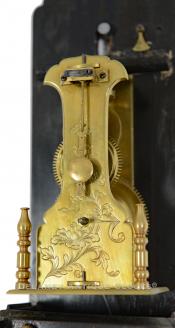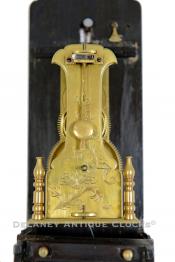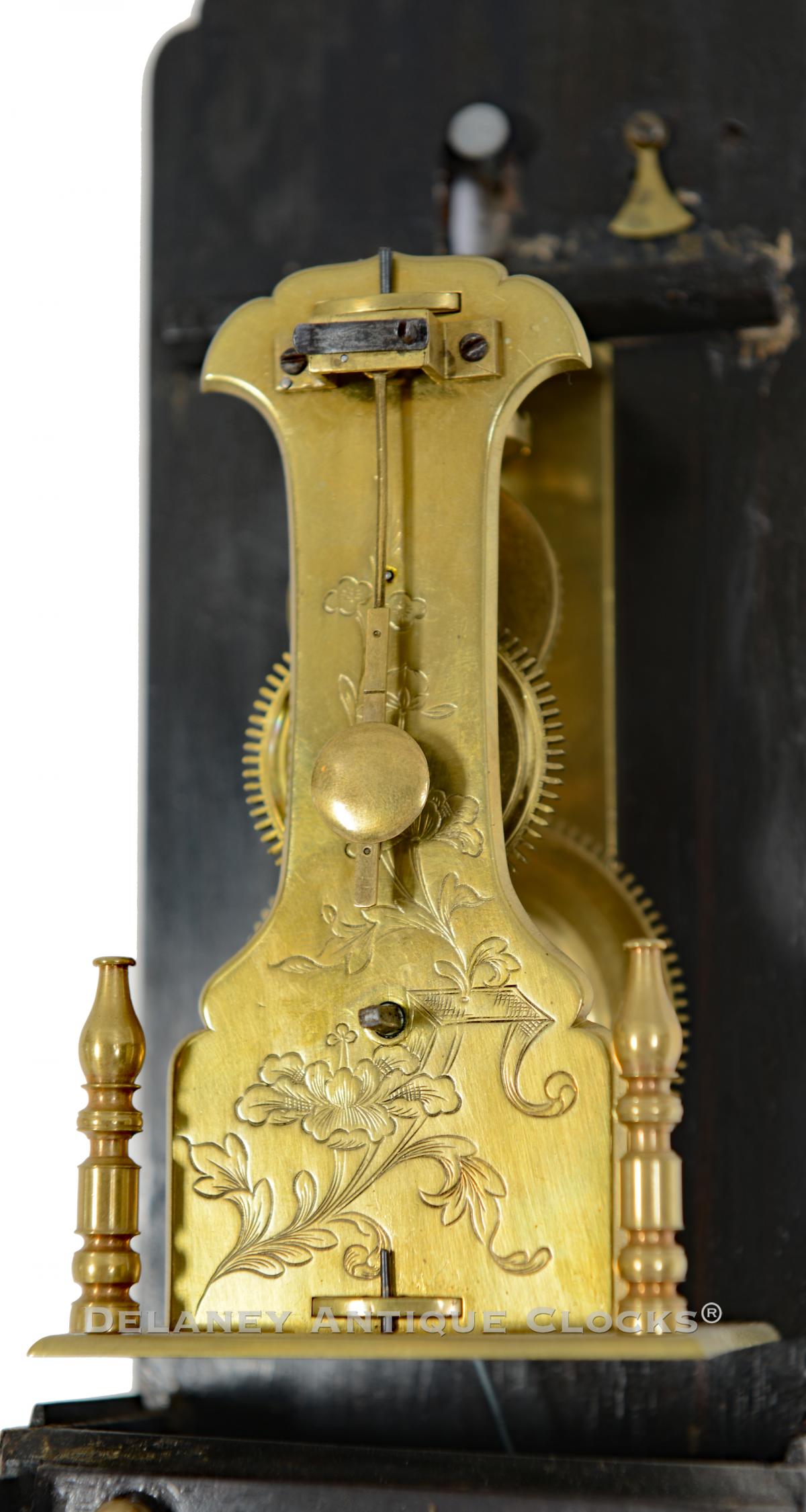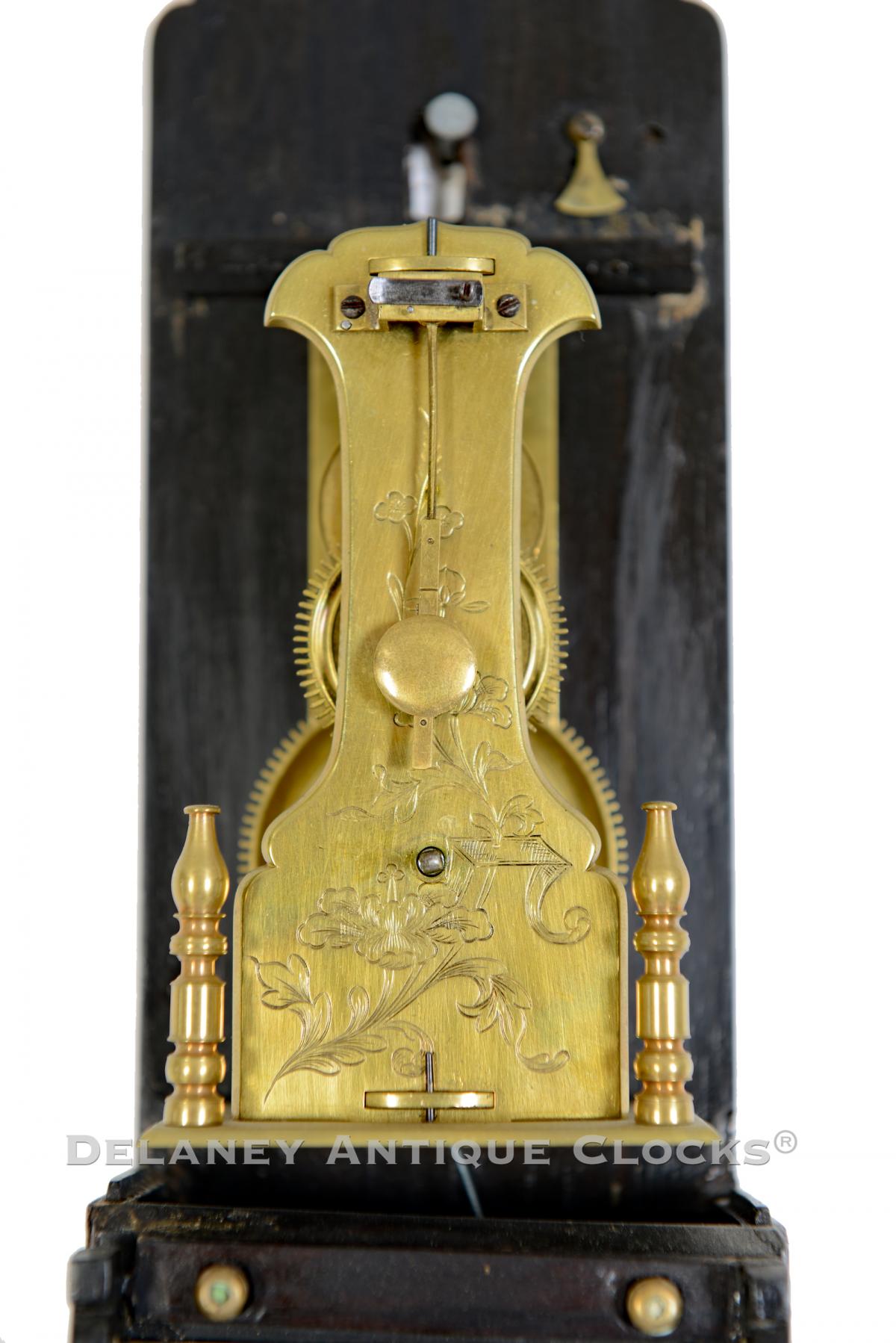The clock pictured is a Japanese Pillar or Stick clock, more formally called a Japanese Shaku-Dokei clock. 223303.
Japanese stick clock cases are most often constructed in Shitan wood. This wood has the coloring of dark rosewood and is traditionally finely finishedto a high sheen. The backboard extends above the bonnet and is pierced. The hole provides a point to hang the case from a nail or screw. The hood or bonnet protects the mechanism from contaminants like dust. It is fitted with three glass panels that allow viewing of the mechanism. Below this is a long area where the rectangular-shaped Namagata dial is located. This engraved brass dial consists of thirteen columns with a scale to show the changing hours. This has a second side for the other half of the year. The scales are read against a descending arm attached to the weight. The bottom of the case has a key drawer (with a key).
The weight-driven brass constructed movement is decoratively designed. This movement is mounted to the backboard with two screws from the back. The two brass plates that support the gearing are decoratively shaped. The front plate is decorated with floral-themed engravings. Two turned quarter-height columns are fitted to the front corners of the movement's base plate. This movement is powered by a weight regulated by a verge-and-crown escapement. The pendulum swings in front of the front plate and is fitted directly to the verge escapement, which ultimately governs the speed at which the weight drops. The weight descends the length of the case behind the dial. A brass bar is fitted to two sides of the weight. The bar is fitted with a pointer that indicates the clock's time by pointing to the characters on the dial display.
This case measures approximately 20 inches in length. It is 3 inches wide. And 2.5 inches deep.
The Japanese measured time differently than most of the world before the 1860s. The Japanese day was divided into 12 units. Six units were used for daylight hours and six for darkness. These units are called toki, and a full day consists of 12 toki units. This is where their system gets interesting. Since each section or period was divided equally by six, the length of each unit must be variable. We know that the length of daylight during one specific day differs from the next. In fact, that length is constantly changing. An example of the extreme change is the length of day during the Summer Solstice versus the Winter Solstice period. This is a problem for a standard clock display. As a result, many Japanese clocks were designed to manually adjust the unit positions by sliding the toki up or down depending on the need. The dial on this clock is a variation of that theme, showing the graduation of units expanding or contracting over the scale. As a result, the time is read under the appropriate verticle column.
The Japanese adopted the Western system in 1873.
Inventory number 223303.










